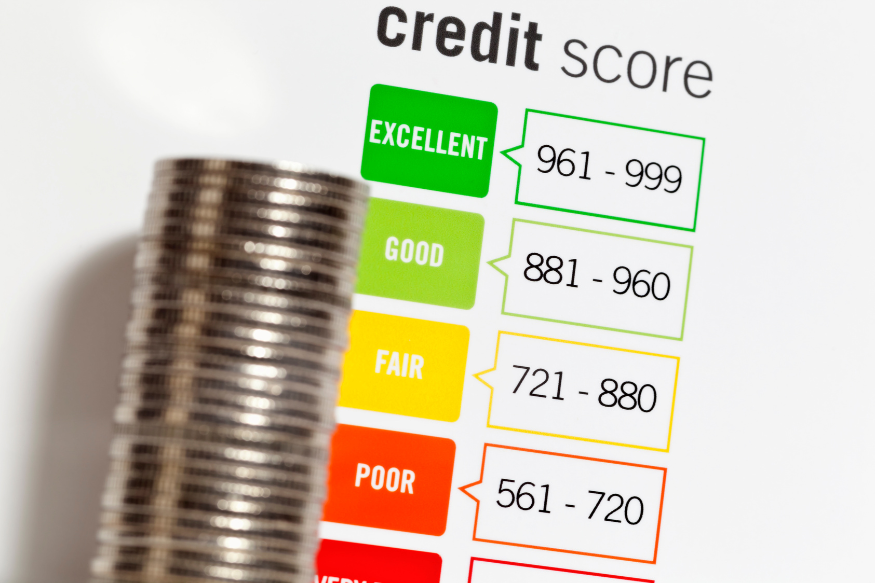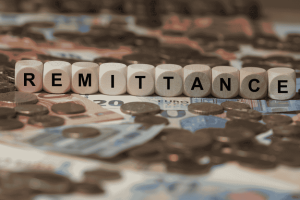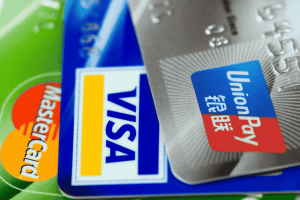Are you a student looking to build your credit history but feeling overwhelmed by the countless credit card options available? You’re not alone. Your first credit card is more than just a piece of plastic—it’s a powerful financial tool that can help shape your financial future in Southeast Asia’s competitive economy.
For students across Singapore, Malaysia, Thailand, Indonesia, and the Philippines, selecting the right credit card isn’t just about accessing funds; it’s about laying the foundation for your financial credibility. A well-managed student credit card can open doors to better loan terms, rental approvals, and even job opportunities after graduation.
But here’s the challenge: not all student credit cards are created equal, and making the wrong choice could set you back rather than propel you forward. Let’s explore how to select a card that genuinely helps you build credit while avoiding common pitfalls that many students face.
Why Building Credit Matters for Southeast Asian Students

Before diving into card selection, let’s understand why building credit during your student years is particularly important in Southeast Asia:
The Regional Credit Reality
Unlike some Western countries, many Southeast Asian nations are still developing their credit reporting systems. This means:
- Credit histories are shorter and take longer to establish
- Fewer opportunities exist to build credit outside of traditional banking products
- Regional mobility requires credit profiles that can translate across borders
Did You Know? In countries like Singapore and Malaysia, your credit score can affect everything from your phone plan eligibility to your ability to rent an apartment. Starting early gives you a significant advantage.
The Student Advantage
As a student, you have a unique opportunity to begin building credit with products specifically designed for your situation:
- Lower income requirements compared to standard credit cards
- Educational resources often included with student banking products
- More forgiving approval criteria for those with no credit history
- Special student perks and rewards relevant to your lifestyle
Key Features to Look for in a Student Credit Card
When evaluating student credit cards in Southeast Asia, prioritize these credit-building features:
1. Credit Bureau Reporting
This is non-negotiable! Ensure the card issuer reports to your country’s major credit bureaus:
| Country | Major Credit Bureaus |
| Singapore | Credit Bureau Singapore (CBS) |
| Malaysia | CTOS, CCRIS |
| Thailand | National Credit Bureau (NCB) |
| Philippines | TransUnion Philippines, CIBI |
| Indonesia | SLIK (Financial Information Service System) |
Without proper reporting, your responsible credit use won’t help build your credit history.
2. Low or No Annual Fees
As a student on a budget, avoid unnecessary costs:
- Look for cards with waived annual fees for students or first-time cardholders
- Check if fee waivers are conditional (e.g., minimum spending requirements)
- Consider if the fee structure changes after graduation
3. Reasonable Credit Limits
The ideal student card offers:
- Low initial credit limits (typically 1-2 times your monthly allowance/income)
- Gradual credit limit increases based on responsible usage
- Clear criteria for limit reviews (usually every 6-12 months)
Why this matters: A lower limit reduces temptation to overspend while still allowing you to demonstrate responsible credit management.
4. Educational Resources
The best student cards come with:
- Financial literacy materials specific to your country’s credit system
- Mobile app features that explain credit concepts
- Regular credit score updates with explanations
- Spending analysis tools to help budget effectively
Red Flags to Avoid When Choosing a Student Credit Card
Be wary of these warning signs that a card might hurt rather than help your credit-building journey:
High Interest Rates
While most credit cards have relatively high interest rates, some student cards in Southeast Asia charge exorbitant rates:
- Average credit card interest rates in Southeast Asia range from 15-26% p.a.
- Predatory student cards might charge 30% or more
- Look for cards with introductory lower rates or longer grace periods
Hidden Fees
Many cards advertise low annual fees but make up for it with:
- Foreign transaction fees (particularly important if you study abroad)
- Cash advance charges (often 3-5% of the amount withdrawn)
- Late payment penalties that are disproportionately high
- Over-limit fees that can compound quickly
Secured Cards Marketed as Student Cards
Some institutions offer secured credit cards (requiring deposits) but market them as student cards:
- Legitimate secured cards can help build credit but should be clearly labeled as such
- Watch for deposit requirements that aren’t prominently disclosed
- Check if your deposit earns interest (it should!)
Aggressive Marketing Without Educational Support
Be cautious of cards that:
- Emphasize rewards over responsible use
- Lack tools to track credit building progress
- Offer high-value sign-up bonuses that encourage immediate large spending
Practical Strategies for Building Credit with Your Student Card

Once you’ve selected the right card, follow these strategies to maximize its credit-building potential:
Do:
- Use your card for predictable, small expenses (transportation, phone bills)
- Set up automatic payments for subscription services
- Keep your utilization below 30% of your limit
Why it works: This establishes a pattern of regular use and timely payments—the two most important factors in building credit.
2. Pay Your Full Balance Every Month
The golden rule of credit building: Never carry a balance if you can avoid it.
- Set up automatic payments for at least the minimum due
- Create calendar reminders 5 days before due dates
- Use your bank’s mobile app to check balances weekly
Impact on your credit: Payment history typically accounts for 35-40% of your credit score calculation in most Southeast Asian scoring models.
3. Monitor Your Credit Progress
Take advantage of free credit monitoring tools:
- Singapore: Credit Bureau Singapore offers a free report once annually
- Malaysia: CTOS provides one free report per year
- Thailand: Check NCB reports through participating banks
- Philippines: TransUnion offers monitoring through partner banks
- Indonesia: Check SLIK reports through your bank
Pro tip: Many fintech apps in Southeast Asia now offer free credit monitoring—use these to track your progress monthly.
4. Gradually Increase Your Credit Mix
After 6-12 months of responsible credit card use:
- Consider adding a small installment loan (like a laptop purchase)
- Look into secured credit builder loans offered by local banks
- Become an authorized user on a parent’s well-established credit account
Why this matters: Credit mix (having different types of credit) typically accounts for 10-15% of your score in most models.
Common Mistakes Southeast Asian Students Make with Credit Cards
Avoid these pitfalls that can damage your credit before it’s established:
Mistake #1: Treating Your Credit Limit as Extra Income
Reality check: Your credit limit is not free money—it’s a tool to demonstrate financial responsibility.
Solution: Create a separate budget for credit card spending that matches your actual income.
Mistake #2: Making Only Minimum Payments
The math is brutal: On a ₱10,000 balance with 2% monthly interest in the Philippines, making only minimum payments would:
- Take over 5 years to pay off
- Cost over ₱6,000 in interest
- Potentially signal financial distress to credit bureaus
Better approach: Pay in full monthly, or if absolutely necessary, pay significantly more than the minimum.
Mistake #3: Applying for Multiple Cards Simultaneously
The temptation: Many students apply for several cards hoping to increase approval chances.
The problem: Each application creates a hard inquiry on your credit report, and multiple inquiries in a short period can lower your score.
Smarter strategy: Research thoroughly and apply for one well-suited card. Wait 6-12 months before considering additional applications.
Mistake #4: Ignoring Regional Differences in Credit Systems
Credit systems vary significantly across Southeast Asia:
- Singapore has the most developed system with comprehensive scoring
- Malaysia uses multiple bureaus with different scoring models
- Thailand, Philippines, and Indonesia have evolving systems with varying levels of sophistication
Adaptation strategy: Learn the specific credit-building rules for your country of residence or study.
Special Considerations for International Students
If you’re studying abroad within Southeast Asia, additional factors come into play:
Cross-Border Credit Building
Unfortunately, credit histories typically don’t transfer between countries. However:
- Some multinational banks (like HSBC, Citibank) may consider your home country credit history
- Establishing credit in your study country can help with local accommodations and services
- Some countries have reciprocal arrangements (Singapore-Malaysia have limited credit information sharing)
Documentation Requirements
International students often need:
- Passport and student visa
- Proof of enrollment from your educational institution
- Local address verification
- Guarantor or security deposit (more commonly required for international students)
Currency Considerations
If you’ll use your card across borders:
- Prioritize cards with low or no foreign transaction fees
- Consider multi-currency cards available in Singapore and Malaysia
- Check if your home country card offers better terms for international use
When to Graduate from Your Student Credit Card
Your student credit card shouldn’t be forever. Consider upgrading when:
- You’ve maintained excellent payment history for 18-24 months
- Your income increases significantly after graduation
- You need higher credit limits for major life expenses
- Better rewards programs become available to you based on your improved credit profile
Timing tip: Many banks in Southeast Asia offer automatic upgrade paths from student to professional credit cards upon graduation—ask about these programs when applying.
Conclusion: Your Credit Journey Starts Now

Choosing the right student credit card is just the beginning of your credit-building journey. With careful selection and responsible use, this financial tool can help establish the strong credit foundation you’ll need for future financial milestones—whether that’s financing further education, starting a business, or purchasing your first home.
Remember that building credit is a marathon, not a sprint. The habits you develop now will shape your financial reputation for years to come. By selecting a card with strong credit-building features, using it responsibly, and monitoring your progress, you’re taking control of your financial future in a region where strong credit is becoming increasingly important.
Ready to take the next step? Compare the options available in your country, prioritizing those that report to credit bureaus, offer educational resources, and come with student-friendly fee structures. Your future self will thank you for the solid credit foundation you’re building today.









